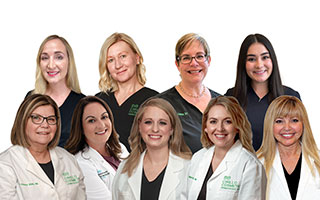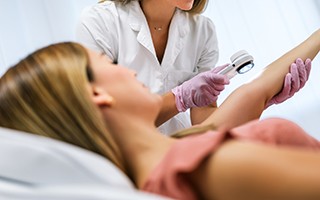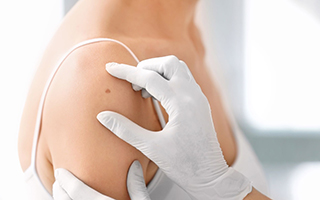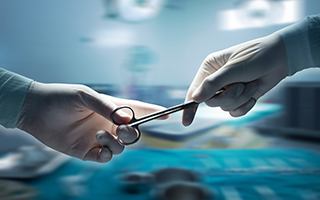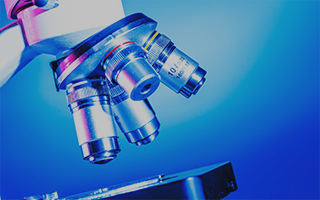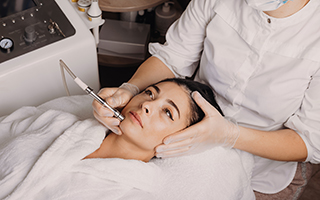Trauma and Complex Wound Reconstruction
Ensure Optimal Healing and Closure for Severe Wounds for Bryn Mawr, Newtown Square, Philadelphia, and the Main Line
- Home
- Plastic Surgery
- Trauma and Complex Wound Reconstruction
Many simple wounds heal well on their own, but extensive burns, previous surgical scars, and wounds that occur due to trauma, tumor removal, vascular disease, congenital deformities, or other causes may not. A significant amount of skin and subcutaneous tissue may be lost, and structures such as bone, joint, tendon, nerve, and vessels may be exposed due to the injury. A wound may affect multiple tissue layers. If a patient has chronic diseases such as diabetes, this can further delay healing. Specialists play an important role in helping these patients. Trauma and complex wound reconstruction from the Cirillo Center for Plastic Surgery helps to address existing wounds that are not healing properly or would not heal on their own after surgery.
Cirillo Center for Plastic Surgery’s board-certified plastic surgeon is often called for emergencies with our patients, or patients of Main Line Health in need of major reconstruction after severe injury. To schedule your consultation with Dr. Laura Gowen in our Bryn Mawr office, Please BOOK ONLINE, call 610.672.0500, or Contact Us.
How Does Trauma and Complex Wound Reconstruction Work?
Complex wound reconstruction often requires a multi-modality approach, and the goal is to enhance the quality of life of the patient. Severe wounds can restrict mobility, result in a loss of sensation, or look unappealing. Grafts, flaps, and reconstructive surgery may be used in combination to achieve the desired result.
Techniques for Trauma and Complex Wound Reconstruction
There are multiple, advanced techniques used for complex wound reconstruction. They may involve changing dressings, transplanting tissues from one location on the body to another area, and microsurgery. Dead tissue may need to be removed prior to wound reconstruction.
The most appropriate type of treatment depends on a variety of factors, including the patient’s age, the patient’s general state of health, where the wound is located, the depth and size of the wound, whether there are tissues or structures that have been exposed, the type of injury, expected functional recovery, and the possible presence of an infection. Our plastic surgeon will help each patient determine which technique is most suitable based on individual needs.
Skin Grafts
A skin graft consists of transplanting tissue from one part of the body, such as the buttocks or thighs, to cover the wound area.
Flaps
When a piece of tissue that has its own blood supply is used to close a wound, this is referred to as a flap reconstructive surgery. The tissue can be moved from a nearby donor area or from other areas on the body for complex wound reconstruction.
Microsurgery
Microsurgery is a technique for wound reconstruction that involves transplantation or re-attachment of tissue to reconstruct parts of the face and body, including small blood vessels and nerves, using specialized instruments and a microscope.
Tissue Expansion
This wound reconstruction technique is designed to encourage the growth of healthy tissue that will be used to repair a damaged area on the body.

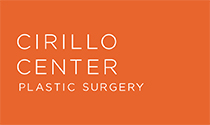
Meet Plastic Surgeon
Laura A. Gowen, M.D.
Board-certified and breast-fellowship trained plastic surgeon Laura A. Gowen, M.D., draws on her extensive experience and uses advanced techniques to create beautiful, natural results for both cosmetic and reconstructive surgery patients.


What to Expect After Trauma and Complex Wound Reconstruction
The length of recovery after complex wound reconstruction depends on how extensive the wound or deformity was prior to surgery and how extensive the wound reconstruction process is. After wound reconstruction, it’s critical that patients follow the instructions and guidelines for wound care that are provided.
It’s normal to experience fatigue, weakness, and low energy levels after this type of procedure. Patients should get plenty of rest and try not to push themselves too hard. Be patient and remember that for several months, it will be normal for the appearance, color, and sensation at the surgical site to go through changes. Be aware of possible signs of infection at the surgical site, such as white pimples or blisters, redness and swelling, excess drainage, sharp pain, fevers, sweats, and skin rashes.
Cirillo Center for Plastic Surgery’s board-certified plastic surgeon is often called for emergencies with our patients, or patients of Main Line Health in need of major reconstruction after severe injury. To schedule your consultation with Dr. Laura Gowen in our Bryn Mawr office, Please BOOK ONLINE, call 610.672.0500, or Contact Us.


